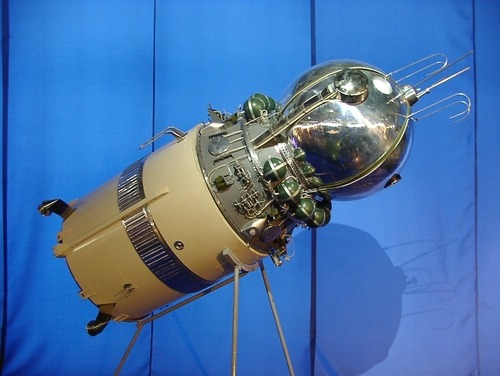The Victors Write History
The victors write history
"Lost Cities" Discovered In Libya
The Garamantes were an ancient civilization, in what is today Libya, on the African northern coast. Unfortunately for their legacy, most of what we knew about them comes from their enemies, the Romans. Unsurprisingly, the Roman accounts described the Garamantes as “barbaric nomads and troublemakers on the edge of the Roman Empire.” This view of the Garamantes as a minor, annoying tribe is being overturned by recent digs. In 2011, a team of researchers led by archaeologist David Mattingly from the University of Leicester discovered more than 100 fortified farms, towns, and villages with castle-like structures in Libya that date from 1 CE to 500 CE. The Garamantes operated a trans-Saharan trade, and were even pioneers at building oases! Hardly the “barbaric nomads” the Romans unfairly called them.
More Posts from Stubborn-turtle-blog and Others
Like Britain, Seattle also takes it as a sign of weakness to use an umbrella

In the early 1750s, an Englishman by the name of Jonas Hanway, lately returned from a trip to France, began carrying an umbrella around the rainy streets of London. People were outraged. Some bystanders hooted and jeered at Hanway as he passed; others simply stared in shock. Hanway was the first man to parade an umbrella unashamed in 18th-century England, a time and place in which umbrellas were strictly taboo. In the minds of many Brits, umbrella usage was symptomatic of a weakness of character, particularly among men. The British also regarded umbrellas as too French—inspired by the parasol, a Far Eastern contraption that for centuries kept nobles protected from the sun, the umbrella had begun to flourish in France in the early 18th century when Paris merchant Jean Marius invented a lightweight, folding version that, with added waterproofing materials, could protect users from rain and snow. In 1712, the French Princess Palatine purchased one of Marius’s umbrellas; soon after, it became a must-have accessory for noblewomen across the country. Later British umbrella users reported being called “mincing Frenchm[e]n” for carrying them in public.
50, 100 years down the line, will this be in the history books? Will the "War on terror" be over?

Battle of Mosul begins as forces push toward Islamic State stronghold.
The wood siding could age badly unless it's well-treated, but otherwise cool.

Voskhod-the first multiple-manned mission
Although we now take for granted the long term success of the International Space Station, it wasn’t too long ago that we were totally earthbound. That changed on this day, October 12, 1964 when the Soviet Union launched the Voskhod 1 (Восхо́д), the first manned capsule to carry more than one person into space. The Voskhod program was a proof of concept program to test systems for more ambitious space exploration. The Voskhod program was notable for several firsts: the first multi-person mission to space (Cosmonauts Komarov, Yegorov and Feoktistov in the Voskhod 1) and the first space walk (Belyayev and Leonov in Voskhod 2). The Vostok and Voskhod programs provided the framework for what became the Soyuz program and ultimately the current ISS.

The Russian desire to ‘win’ the Space Race led to many dangerous compromises. The interior of the capsule (shown above) was so cramped that the cosmonauts would not have room for space suits, making the flight extremely dangerous in the event of depressurisation. To insure the engineers paid enough attention to this, head designer Sergei Korolev assigned the lead engineer to fly inside the capsule, therefore motivating him to design the safest capsule possible.

The Russian word Voskhod (Восхо́д) means sunrise and is a combination of the Russian words vos- (from vostok восток) meaning east and xodete (ходить) meaning go or rise.

Samantha Payne’s startup Open Bionics allows anyone in the world to download and 3D print their own bionic limbs.
Tilly was just 15 months old when she had to have her hand amputated after contracting meningitis septicaemia. Now, with a bionic arm from Open Bionics, Tilly can move all of her fingers and perform more complex movements. EMG sensors on her arm detect muscle movement, telling her bionic arm how quickly or firmly to squeeze its fingers.
I second wanting prints of these









Alejandro Guijarro photographs the chalkboards of some of the brightest minds in quantum physics for his continuing series Momentum. He went to research facilities like CERN and many of the top universities in the world to find them.
-
 freespiritphoenix liked this · 6 years ago
freespiritphoenix liked this · 6 years ago -
 bookbunny9 liked this · 6 years ago
bookbunny9 liked this · 6 years ago -
 honestlynoonecares reblogged this · 8 years ago
honestlynoonecares reblogged this · 8 years ago -
 honestlynoonecares liked this · 8 years ago
honestlynoonecares liked this · 8 years ago -
 fughtopia reblogged this · 8 years ago
fughtopia reblogged this · 8 years ago -
 mizuritamanami reblogged this · 8 years ago
mizuritamanami reblogged this · 8 years ago -
 mizuritamanami liked this · 8 years ago
mizuritamanami liked this · 8 years ago -
 xerxesxextra reblogged this · 8 years ago
xerxesxextra reblogged this · 8 years ago -
 xerxesxextra reblogged this · 8 years ago
xerxesxextra reblogged this · 8 years ago -
 mr-yesbody liked this · 8 years ago
mr-yesbody liked this · 8 years ago -
 aw-some-musics liked this · 8 years ago
aw-some-musics liked this · 8 years ago -
 brokentowels liked this · 8 years ago
brokentowels liked this · 8 years ago -
 heartofstanding reblogged this · 8 years ago
heartofstanding reblogged this · 8 years ago -
 sassyenthusiasthistorylover333 liked this · 8 years ago
sassyenthusiasthistorylover333 liked this · 8 years ago -
 nuclearredneck reblogged this · 8 years ago
nuclearredneck reblogged this · 8 years ago -
 slavpolytheist reblogged this · 8 years ago
slavpolytheist reblogged this · 8 years ago -
 media-stuff reblogged this · 8 years ago
media-stuff reblogged this · 8 years ago -
 freakingp liked this · 8 years ago
freakingp liked this · 8 years ago -
 theseasasleep reblogged this · 8 years ago
theseasasleep reblogged this · 8 years ago -
 kingstgate liked this · 8 years ago
kingstgate liked this · 8 years ago -
 solopianomusic liked this · 8 years ago
solopianomusic liked this · 8 years ago -
 ammg-old reblogged this · 8 years ago
ammg-old reblogged this · 8 years ago -
 kaltnab reblogged this · 8 years ago
kaltnab reblogged this · 8 years ago -
 kaltnab liked this · 8 years ago
kaltnab liked this · 8 years ago -
 herinternetdaze liked this · 8 years ago
herinternetdaze liked this · 8 years ago -
 ilikehistoryandstuff reblogged this · 8 years ago
ilikehistoryandstuff reblogged this · 8 years ago -
 limes-brittanicus reblogged this · 8 years ago
limes-brittanicus reblogged this · 8 years ago -
 lea-bluebell liked this · 8 years ago
lea-bluebell liked this · 8 years ago -
 swanely reblogged this · 8 years ago
swanely reblogged this · 8 years ago -
 nobodyishomeanymore liked this · 8 years ago
nobodyishomeanymore liked this · 8 years ago -
 mirrix reblogged this · 8 years ago
mirrix reblogged this · 8 years ago -
 snarkytextingandscones liked this · 8 years ago
snarkytextingandscones liked this · 8 years ago -
 arse-moriendi reblogged this · 8 years ago
arse-moriendi reblogged this · 8 years ago -
 nerdyboyhunter reblogged this · 8 years ago
nerdyboyhunter reblogged this · 8 years ago -
 lovetruemusic reblogged this · 8 years ago
lovetruemusic reblogged this · 8 years ago -
 itsonlymudandrocksandshit liked this · 8 years ago
itsonlymudandrocksandshit liked this · 8 years ago -
 knightyg reblogged this · 8 years ago
knightyg reblogged this · 8 years ago -
 alldeyeveryday liked this · 8 years ago
alldeyeveryday liked this · 8 years ago
Gaming, Science, History, Feminism, and all other manners of geekery. Also a lot of dance
243 posts


![The Best Squad. [ Via @awkwardyeti]](https://64.media.tumblr.com/55a16af155b4e0e0c33b49ad13241bd6/tumblr_oiul6tTnnT1s04h2ho1_500.png)


